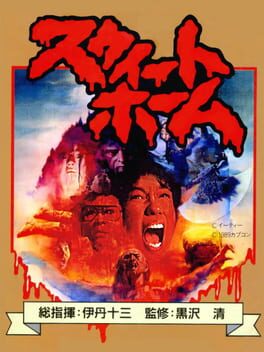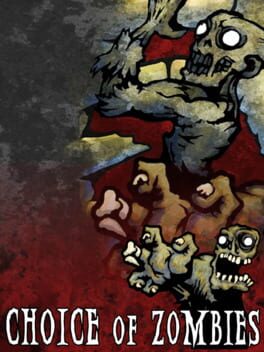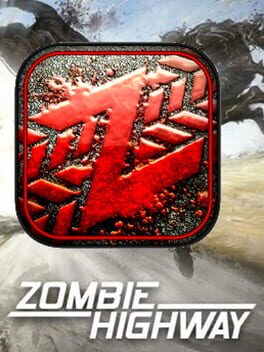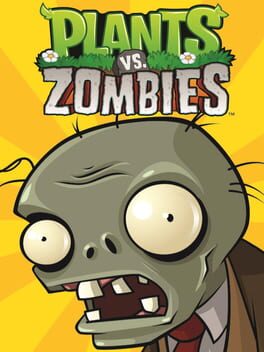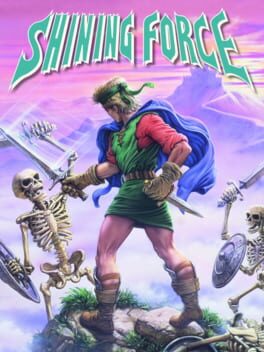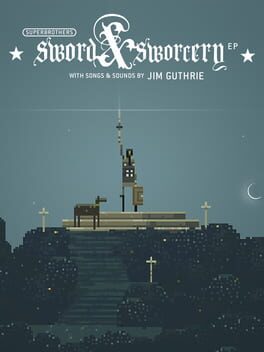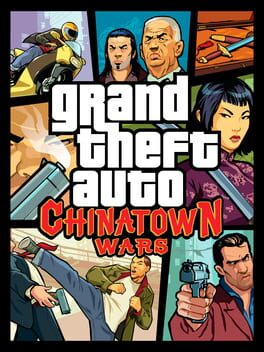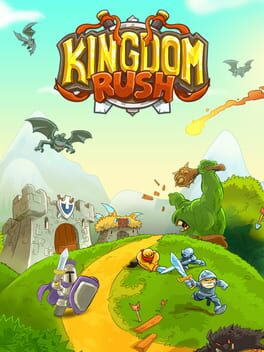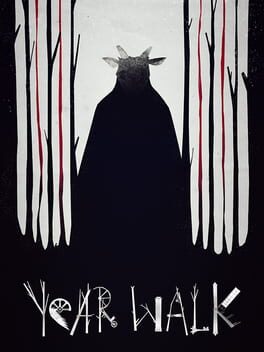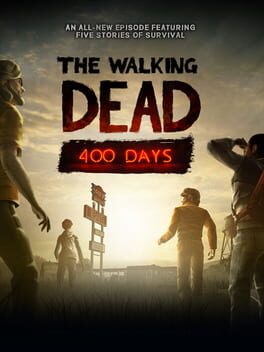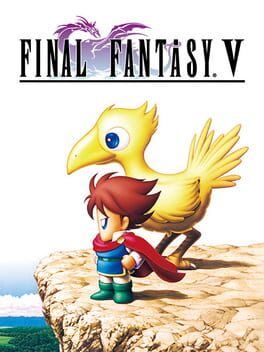novalin
2023
1989
If you haven’t heard of Sweet Home then you are not alone, as it was only ever officially released in Japan. The version I am playing is a translated reproduction cartridge, meaning it isn’t an original NES game, but you wouldn’t know that by the looks of it. Sweet Home, produced by Capcom, is a precursor to the Resident Evil (Biohazard) series. Similar to Resident Evil, it’s a survival horror themed game that takes place in a creepy mansion filled with creatures and zombies. The mechanics draw similarities as well, as you progress by collecting items, backtracking, and using those items to progress in the form of light puzzles. Notes left behind offer clues to both your advancement and the grander story. Even the ability to toggle between characters is later found in Resident Evil Zero.
Where Sweet Home differs from the Resident Evil lineage the most is two-fold: 1) it’s an RPG, and 2) what makes this game so unique is how you partner with the five playable characters. With regards to the latter, the dynamic of grouping (and ungrouping) with your fellow trapped survivors is what makes the game unique and special. You are restricted to no more than three characters in a party at a time, and each character can only hold two items, in addition to their special item. This forces the player to make strategic decisions. Do I have a good set of items for what I anticipate ahead? If I need items from the group of two I left behind will they be able to safely catch up to the party of three? You’re constantly making trade-offs, and while on occasion it feels somewhat tedious, it mostly feels engaging.
And at times, safety in numbers can backfire. I find myself often toggling between holding a stance that the clues are too literal, and thus, too easy, and wishing the game was more challenging. And then, just minutes later, my entire party of three will fall into a pit, hanging for their lives, and because I wasn’t careful enough my remaining party of two isn’t able to get to them in time to save them. It’s actually moments like these that really up my appreciation for this game as it’s these types of creative surprises that adds flavor.
While I save often in this game, in fear of permanently losing a character, there was a moment that occurred early in the game where I decided to not reset and, instead, decided to accept and carry on. I had crossed a pit to obtain an essential item, by placing a log to form a bridge. My party of three doubled back after gathering the item, and this is when the character in the center of the line broke the bridge and hung to the edge. I was able to pull the character back up, but this meant that one of my other characters, Asuka, was now stranded on the other side. I ended up leaving Asuka on that lonely island for a huge portion of the game, always knowing, or at least hoping, that I would come back. It was a promise I made both to myself as a player as well as between the characters in the context of the game world. Eventually I found more logs, returned, and saved my friend. It was a sense of relief to finally be reunited. That was also when I realized that Asuka, all along, had a log in her inventory that she could have used to cross that gap. I laughed to myself.
The survival horror theme is bolstered even further by the ways in which characters become separated. If you’re like me, you occasionally take unnecessary risks in games (especially if you just saved your progress) in an effort to push the boundaries of the game. For example, there are spirits that will pull a character away from their group, plopping them in a room many screens away. The wisest decision in this moment would be to take the remaining two characters that are still bound together, and to have them navigate to their lost friend. However, like foolish teenagers in countless horror movies, I will often take my solo character and journey on, acting as if I am confined to the perspective of that person. Ask yourself, if you were taken from your friends by ghosts, would you sit still in a strange room? Probably not. Now, a solo trek like this can be disastrous, as you might break a flimsy plank that stretched across a pit, with no one to pull you up. Or you will face enemies alone, and with a finite number of healing items available in the game, this isn’t wise (assuming you even have an item to heal yourself with). This is actually where another ingenious mechanic comes into play: the ability to call for help. In this mode, another character (or set of characters) has limited time to run towards their comrade and assist them. It’s a heart-pounding moment.
Further on the topic of encounters, as mentioned before, this is an RPG, albeit a rather atypical one. Battles are randomly triggered, with the exception of the fights that ensue when you come into direct contact with enemies that traverse across some of the screens. The battles are rather simple, made up primarily of attacks and prayer (think magic). Many of the traditional systems found in RPGs, such as collecting coins, purchasing weapons and items, and resting at inns to regain health, do not exist in Sweet Home (nor do they have a place here). Rather, there is no currency, weapons and items are discovered, and hit points and prayer points are replenished only with tonics.
The environments powerfully convey the mood. In this vast mansion you twist and turn down hallways, up and down stairs leading you to great heights and depths, and explore the outer areas surrounding the property. Each section is truly unique, ranging from underground labyrinths to a lakeside forest. The top-down view is contrasted by more detailed scenes of paintings and monuments, and the occasional open door animation.
Most areas, in addition to having their own visual complexity, are accompanied by a variety of music compositions that fit snugly in the horror genre. A rolling low tone base line is accented by squealing highs. There is a deliberant tempo juxtaposition between the moderate beats-per-minute (BPM) of the exploration music and the upbeat, panic inducing songs that quickly loop and build anxiety when you battle enemies and suffer from poison.
Even with the limitations of the NES, Sweet Home managed to nail the theme of what survival horror should be. You’re scared. You’re often alone. Your resources are limited. Danger lurks behind every corner. The atmosphere is terrifying. A sinister backstory slowly reveals itself, making the world that much more frightening. Death is final.
Not only did Sweet Home bring me back to the joy of experiencing a new NES experience, it also reminded me of the pleasure of solving mysteries through the use of taking notes. Note taking, for many, in and outside the context of gaming, is considered a chore. Growing up in the days of the NES, however, it was not just helpful at times, but often essential. Drawing maps, scribbling down clues, recording passwords...these are all staples of the NES experience.
Where Sweet Home differs from the Resident Evil lineage the most is two-fold: 1) it’s an RPG, and 2) what makes this game so unique is how you partner with the five playable characters. With regards to the latter, the dynamic of grouping (and ungrouping) with your fellow trapped survivors is what makes the game unique and special. You are restricted to no more than three characters in a party at a time, and each character can only hold two items, in addition to their special item. This forces the player to make strategic decisions. Do I have a good set of items for what I anticipate ahead? If I need items from the group of two I left behind will they be able to safely catch up to the party of three? You’re constantly making trade-offs, and while on occasion it feels somewhat tedious, it mostly feels engaging.
And at times, safety in numbers can backfire. I find myself often toggling between holding a stance that the clues are too literal, and thus, too easy, and wishing the game was more challenging. And then, just minutes later, my entire party of three will fall into a pit, hanging for their lives, and because I wasn’t careful enough my remaining party of two isn’t able to get to them in time to save them. It’s actually moments like these that really up my appreciation for this game as it’s these types of creative surprises that adds flavor.
While I save often in this game, in fear of permanently losing a character, there was a moment that occurred early in the game where I decided to not reset and, instead, decided to accept and carry on. I had crossed a pit to obtain an essential item, by placing a log to form a bridge. My party of three doubled back after gathering the item, and this is when the character in the center of the line broke the bridge and hung to the edge. I was able to pull the character back up, but this meant that one of my other characters, Asuka, was now stranded on the other side. I ended up leaving Asuka on that lonely island for a huge portion of the game, always knowing, or at least hoping, that I would come back. It was a promise I made both to myself as a player as well as between the characters in the context of the game world. Eventually I found more logs, returned, and saved my friend. It was a sense of relief to finally be reunited. That was also when I realized that Asuka, all along, had a log in her inventory that she could have used to cross that gap. I laughed to myself.
The survival horror theme is bolstered even further by the ways in which characters become separated. If you’re like me, you occasionally take unnecessary risks in games (especially if you just saved your progress) in an effort to push the boundaries of the game. For example, there are spirits that will pull a character away from their group, plopping them in a room many screens away. The wisest decision in this moment would be to take the remaining two characters that are still bound together, and to have them navigate to their lost friend. However, like foolish teenagers in countless horror movies, I will often take my solo character and journey on, acting as if I am confined to the perspective of that person. Ask yourself, if you were taken from your friends by ghosts, would you sit still in a strange room? Probably not. Now, a solo trek like this can be disastrous, as you might break a flimsy plank that stretched across a pit, with no one to pull you up. Or you will face enemies alone, and with a finite number of healing items available in the game, this isn’t wise (assuming you even have an item to heal yourself with). This is actually where another ingenious mechanic comes into play: the ability to call for help. In this mode, another character (or set of characters) has limited time to run towards their comrade and assist them. It’s a heart-pounding moment.
Further on the topic of encounters, as mentioned before, this is an RPG, albeit a rather atypical one. Battles are randomly triggered, with the exception of the fights that ensue when you come into direct contact with enemies that traverse across some of the screens. The battles are rather simple, made up primarily of attacks and prayer (think magic). Many of the traditional systems found in RPGs, such as collecting coins, purchasing weapons and items, and resting at inns to regain health, do not exist in Sweet Home (nor do they have a place here). Rather, there is no currency, weapons and items are discovered, and hit points and prayer points are replenished only with tonics.
The environments powerfully convey the mood. In this vast mansion you twist and turn down hallways, up and down stairs leading you to great heights and depths, and explore the outer areas surrounding the property. Each section is truly unique, ranging from underground labyrinths to a lakeside forest. The top-down view is contrasted by more detailed scenes of paintings and monuments, and the occasional open door animation.
Most areas, in addition to having their own visual complexity, are accompanied by a variety of music compositions that fit snugly in the horror genre. A rolling low tone base line is accented by squealing highs. There is a deliberant tempo juxtaposition between the moderate beats-per-minute (BPM) of the exploration music and the upbeat, panic inducing songs that quickly loop and build anxiety when you battle enemies and suffer from poison.
Even with the limitations of the NES, Sweet Home managed to nail the theme of what survival horror should be. You’re scared. You’re often alone. Your resources are limited. Danger lurks behind every corner. The atmosphere is terrifying. A sinister backstory slowly reveals itself, making the world that much more frightening. Death is final.
Not only did Sweet Home bring me back to the joy of experiencing a new NES experience, it also reminded me of the pleasure of solving mysteries through the use of taking notes. Note taking, for many, in and outside the context of gaming, is considered a chore. Growing up in the days of the NES, however, it was not just helpful at times, but often essential. Drawing maps, scribbling down clues, recording passwords...these are all staples of the NES experience.
2017
Choice of Zombies, for iOS, is a choose your own adventure game (think interactive story if you aren't familiar with the old CYOA books) brought to you by Choice of Game LLC, a group that produces a variety of CYOA style apps. Warning: spoilers below.
The game begins with the player defining who they are (male/female, job, etc.) which factors into some of the statistics that evolve as you progress through your adventure. And yes, the stats do seem to matter when making choices in the game. For example, during one of my three adventures I selected to be a guy that exercises, so my choices tended to lean towards physical activities. Whereas in another adventure I was a software engineer that was out of shape, and I elected to be sneaky and slow to save a survivor, which proved to be successful.
Overall there isn't much of an overarching story here, and I was really hoping I would discover more about the characters, the settings, and the outbreak. Most of the writing is instead geared towards campy humor, of which is sometimes funny but more often just too cheesy for my taste. Instead I would have enjoyed seeing more written about background stories, details, and character motivation.
Unfortunately there aren't any images (unless you count the main menu screen), and because of the simplistic style of the story telling I think some artwork would have been a great addition here. I remember as a child reading CYOA books and my favorites had amazing drawings to enjoy. I understand the argument that images in books can deter from the imagination of the reader, but again the writing focuses mainly on humor and simple facts, and is rather sparse on descriptions outside of the key details (e.g. there is a weapon on the left or the boy is sitting down) so I only see artwork elevating the experience.
During my 3 sessions I tried to take myself down different paths, for the sake of variety, though most of my paths intersected leaving me to believe there isn't a whole lot of content here. I did manage to collect a variety of different characters, many that overlapped between the adventures as well, and I noticed the game was a lot more interesting the more characters I brought along with me. At times a character would make a critical suggestion for how to resolve a problem, a small character would fit through a tight space, and other times characters argued about each other.
There was one annoying bug I experienced during one of my adventures that I'm hoping the developers can clean up, as it was definitely an immersion breaker. While at the church we parked our car inside the gate, and when Brian left our party in a rush he also left the car behind. However, when I fled the church later I was told the car was gone since Brian had taken it.
The game begins with the player defining who they are (male/female, job, etc.) which factors into some of the statistics that evolve as you progress through your adventure. And yes, the stats do seem to matter when making choices in the game. For example, during one of my three adventures I selected to be a guy that exercises, so my choices tended to lean towards physical activities. Whereas in another adventure I was a software engineer that was out of shape, and I elected to be sneaky and slow to save a survivor, which proved to be successful.
Overall there isn't much of an overarching story here, and I was really hoping I would discover more about the characters, the settings, and the outbreak. Most of the writing is instead geared towards campy humor, of which is sometimes funny but more often just too cheesy for my taste. Instead I would have enjoyed seeing more written about background stories, details, and character motivation.
Unfortunately there aren't any images (unless you count the main menu screen), and because of the simplistic style of the story telling I think some artwork would have been a great addition here. I remember as a child reading CYOA books and my favorites had amazing drawings to enjoy. I understand the argument that images in books can deter from the imagination of the reader, but again the writing focuses mainly on humor and simple facts, and is rather sparse on descriptions outside of the key details (e.g. there is a weapon on the left or the boy is sitting down) so I only see artwork elevating the experience.
During my 3 sessions I tried to take myself down different paths, for the sake of variety, though most of my paths intersected leaving me to believe there isn't a whole lot of content here. I did manage to collect a variety of different characters, many that overlapped between the adventures as well, and I noticed the game was a lot more interesting the more characters I brought along with me. At times a character would make a critical suggestion for how to resolve a problem, a small character would fit through a tight space, and other times characters argued about each other.
There was one annoying bug I experienced during one of my adventures that I'm hoping the developers can clean up, as it was definitely an immersion breaker. While at the church we parked our car inside the gate, and when Brian left our party in a rush he also left the car behind. However, when I fled the church later I was told the car was gone since Brian had taken it.
TBD
2009
2010
2009
1992
Classic tactical strategy game with a huge collection of characters.
Originally released in 1992 for the Sega Genesis, Shining Force has been re-released many times, and as of fairly recently it has been ported to the iPhone. I loved this game as a kid, and playing it again on the iPhone brought back a lot of memories, not to mention the game still holds up as a great experience. Below I am listing out 5 good reasons to play Shining Force and though there are many more reasons, these are just some that stand out for me.
Originally released in 1992 for the Sega Genesis, Shining Force has been re-released many times, and as of fairly recently it has been ported to the iPhone. I loved this game as a kid, and playing it again on the iPhone brought back a lot of memories, not to mention the game still holds up as a great experience. Below I am listing out 5 good reasons to play Shining Force and though there are many more reasons, these are just some that stand out for me.
2011
2013
An immersive experience that transcends the typical gaming boundaries.
Before I get into my review of Year Walk, as a disclaimer, there are no specific spoilers in my review. I think it’s important that everyone experiences this game with fresh eyes so that they can truly appreciate it. However, the only guaranteed way that I can promise nothing below spoils anything is to advise that you play the game first, and then read my review.
Year Walk, both mysterious and enlightening, allowed me to encounter a wide array of emotions that many games fail to do: excitement, fear, intrigue, sadness, hope, satisfaction, and understanding. And all packed into a short, yet complex and thought-provoking, iPhone game. In many ways I have trouble classifying this as just a video game, but rather think of it as a combination of game, exploration, and mystery. The interactive experience transcends the usual boundaries of typical games, with the true ending only coming to light once the player has fully dissected all of the rich layers that encompass this poetic story of self-discovery, love, and sacrifice.
As with any stellar game, book, or movie, Year Walk left a lingering impression in my mind, like a stamp composed of the cocktail of sensations I had felt. My thoughts remain curiously fixated on the characters, creatures, and settings, with a desire to know more, but a satisfaction with what I had learned and revealed.
Before I get into my review of Year Walk, as a disclaimer, there are no specific spoilers in my review. I think it’s important that everyone experiences this game with fresh eyes so that they can truly appreciate it. However, the only guaranteed way that I can promise nothing below spoils anything is to advise that you play the game first, and then read my review.
Year Walk, both mysterious and enlightening, allowed me to encounter a wide array of emotions that many games fail to do: excitement, fear, intrigue, sadness, hope, satisfaction, and understanding. And all packed into a short, yet complex and thought-provoking, iPhone game. In many ways I have trouble classifying this as just a video game, but rather think of it as a combination of game, exploration, and mystery. The interactive experience transcends the usual boundaries of typical games, with the true ending only coming to light once the player has fully dissected all of the rich layers that encompass this poetic story of self-discovery, love, and sacrifice.
As with any stellar game, book, or movie, Year Walk left a lingering impression in my mind, like a stamp composed of the cocktail of sensations I had felt. My thoughts remain curiously fixated on the characters, creatures, and settings, with a desire to know more, but a satisfaction with what I had learned and revealed.
This review contains spoilers
400 Days is the latest addition to Telltale Games' The Walking Dead series, where you play the role of 5 different survivors. You select the character order to act out, and the choices you make in the individual stories impact portions of how the other stories act out (at least to a degree). Ultimately the characters all come together, and are offered a proposition by an outsider.
As with the previous 5 episodes the experience is a mixture of rich story telling and engaging decision making. There were definitely a few gritty moments where I was shocked (in a good way) and would cringe at what had just occurred (but again, in a good way). Seemingly missing from this specific episode are the simple puzzles that I enjoyed in episodes 1-5, leading to a much more linear, and simplified experience.
I am a huge fan of the 5 episodes that proceeded this installment. In fact, it's the best iPhone game I have ever played, however I am a bit disappointed in this particular release. While the stories are interesting, overall the experience was very short lived. After completing the episode I was left with more questions than answers, which may prove to be a good thing once the second season of this game is released. Also, I felt somewhat cheated to spend 5 dollars on an episode that now gets packaged for free with the bundle that I had previously purchased, a purchase made before this episode was developed.
But more problematic than the length and the price was the disconnect I felt from all of these characters. The reason being that the stories, of which there are 5, are spread too thin. By the time I start to connect with a character or understand a fraction of their background, their story comes to an abrupt end, and we move on to another brand new character. Again, my hope is that Telltale Games continues to expand on these characters, but as it is right now, just getting a taste of the intro to a story, with an inevitable wait until the next release, leaves a bitter taste.
As with the previous 5 episodes the experience is a mixture of rich story telling and engaging decision making. There were definitely a few gritty moments where I was shocked (in a good way) and would cringe at what had just occurred (but again, in a good way). Seemingly missing from this specific episode are the simple puzzles that I enjoyed in episodes 1-5, leading to a much more linear, and simplified experience.
I am a huge fan of the 5 episodes that proceeded this installment. In fact, it's the best iPhone game I have ever played, however I am a bit disappointed in this particular release. While the stories are interesting, overall the experience was very short lived. After completing the episode I was left with more questions than answers, which may prove to be a good thing once the second season of this game is released. Also, I felt somewhat cheated to spend 5 dollars on an episode that now gets packaged for free with the bundle that I had previously purchased, a purchase made before this episode was developed.
But more problematic than the length and the price was the disconnect I felt from all of these characters. The reason being that the stories, of which there are 5, are spread too thin. By the time I start to connect with a character or understand a fraction of their background, their story comes to an abrupt end, and we move on to another brand new character. Again, my hope is that Telltale Games continues to expand on these characters, but as it is right now, just getting a taste of the intro to a story, with an inevitable wait until the next release, leaves a bitter taste.
1992
This review contains spoilers
This review is for the iOS version.
Let me start by saying Final Fantasy V is not a terrible game, but it does have many terrible qualities to it that made me cringe constantly throughout my experience. The game starts off slow, simple, and boring, and after many hours this game does eventually ramp up to have some complex battles, abilities, and jobs. In fact, the most enjoyable dungeon is the optional one that you can only access after you have completed the game. And by the time you get near the end of the game you have so many classes to choose from with a lot of interesting abilities, which allow for various tactical combinations. Unfortunately the "bad" in FFV is overshadowed by weak design decisions throughout, making an otherwise enjoyable RPG something rather laughable.
Below I am listing out what I think are the 6 worst attributes of FFV, and in no particular order (they're all bad). Warning: spoilers.
#1 - A Very Slow Start
For about the first 40% of this game I found myself just letting auto-battle fast-forward me through the majority of battles, mainly just melee hitting every enemy. The boss battles for the first half of the game are incredibly simple and one-dimensional, lacking any real sense of strategy offensively and defensively (just whack at him over and over and maybe cure on occasion).
#2 - Lazy Story Telling
Nothing breaks immersion more when you can feel how lazy or predictable a writer or designer is, and there are 3 parts that stand out as prime examples from FFV:
The 2 girls are sisters. It wasn't a surprise. It was obvious the moment you showed them having the same pendant (a poor attempt at subtle foreshadowing). Yet you dragged this out for hours as if it is meant to be a huge moment of amazement.
Why did I have a world map of the 2nd world the moment I arrived? Again we have another surprise immediately ruined.
Faris, the pirate captain, is revealed to be a woman...wait, I was supposed to think she was a man up until then? She always looked like a woman to me (both in the dialogue art and in the character art). Of course, all Final Fantasy characters always look like women, so I never know when they are supposed to be men.
#3 - Our Dorky Hero
When I play an RPG I hope that the main character is cool looking, or at least evolves to have some more edge (as we see in Final Fantasy Tactics). However in FFV you get one of the worst looking main characters produced by an RPG. What's sad is that there are some great looking outfits for the various classes (e.g. Dragoon, Ninja, and Warrior), but you only see those outfits when you are in battle. And since you spend the majority of your time moving the main character around towns, the world map, or inside dungeons, you are forced to look at man-boobs here for hours.
#4 - The Lame Character Gestures
#5 - Bad Controls
Somehow the FFV team managed to create such terrible movement controls for such a simple top-down game. I frequently found myself driving my character in directions and angles I never intended, often rubbing him against walls that he would slide across as I attempted to get him to go up a flight of stairs.
#6 - Cheesy Dialogue
I swear this game must have been written by a 7 year old boy (or at least the "humor" parts). The story-line is very cliche (most RPGs are), but it was the cheesy one-liners that really made me drop by face into my palms, with gems like "hasta la bye-bye". This game couldn't decide if it wanted to be a serious, epic adventure or just be a string of campy jokes and exaggerated animations, and it really suffers as a result.
Let me start by saying Final Fantasy V is not a terrible game, but it does have many terrible qualities to it that made me cringe constantly throughout my experience. The game starts off slow, simple, and boring, and after many hours this game does eventually ramp up to have some complex battles, abilities, and jobs. In fact, the most enjoyable dungeon is the optional one that you can only access after you have completed the game. And by the time you get near the end of the game you have so many classes to choose from with a lot of interesting abilities, which allow for various tactical combinations. Unfortunately the "bad" in FFV is overshadowed by weak design decisions throughout, making an otherwise enjoyable RPG something rather laughable.
Below I am listing out what I think are the 6 worst attributes of FFV, and in no particular order (they're all bad). Warning: spoilers.
#1 - A Very Slow Start
For about the first 40% of this game I found myself just letting auto-battle fast-forward me through the majority of battles, mainly just melee hitting every enemy. The boss battles for the first half of the game are incredibly simple and one-dimensional, lacking any real sense of strategy offensively and defensively (just whack at him over and over and maybe cure on occasion).
#2 - Lazy Story Telling
Nothing breaks immersion more when you can feel how lazy or predictable a writer or designer is, and there are 3 parts that stand out as prime examples from FFV:
The 2 girls are sisters. It wasn't a surprise. It was obvious the moment you showed them having the same pendant (a poor attempt at subtle foreshadowing). Yet you dragged this out for hours as if it is meant to be a huge moment of amazement.
Why did I have a world map of the 2nd world the moment I arrived? Again we have another surprise immediately ruined.
Faris, the pirate captain, is revealed to be a woman...wait, I was supposed to think she was a man up until then? She always looked like a woman to me (both in the dialogue art and in the character art). Of course, all Final Fantasy characters always look like women, so I never know when they are supposed to be men.
#3 - Our Dorky Hero
When I play an RPG I hope that the main character is cool looking, or at least evolves to have some more edge (as we see in Final Fantasy Tactics). However in FFV you get one of the worst looking main characters produced by an RPG. What's sad is that there are some great looking outfits for the various classes (e.g. Dragoon, Ninja, and Warrior), but you only see those outfits when you are in battle. And since you spend the majority of your time moving the main character around towns, the world map, or inside dungeons, you are forced to look at man-boobs here for hours.
#4 - The Lame Character Gestures
#5 - Bad Controls
Somehow the FFV team managed to create such terrible movement controls for such a simple top-down game. I frequently found myself driving my character in directions and angles I never intended, often rubbing him against walls that he would slide across as I attempted to get him to go up a flight of stairs.
#6 - Cheesy Dialogue
I swear this game must have been written by a 7 year old boy (or at least the "humor" parts). The story-line is very cliche (most RPGs are), but it was the cheesy one-liners that really made me drop by face into my palms, with gems like "hasta la bye-bye". This game couldn't decide if it wanted to be a serious, epic adventure or just be a string of campy jokes and exaggerated animations, and it really suffers as a result.


